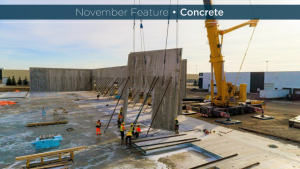Concrete roads and sidewalks are buckling across Canada in heat waves creating yet another climate change challenge for infrastructure design.Őż It is a challenge the U.S. and other hot climates have tackled for years as temperatures spike.
‚ÄúIt is not just roads,‚ÄĚ said Stephen Muench, professor of civil engineering at the University of Washington in Seattle. ‚ÄúIt is all infrastructures in general.‚ÄĚŐżŐż
The once gradual march forward in global temperatures seen in fractions of a degree is no longer a measuring stick for designing as severe temperatures hit and occur more often.Őż
In 2021, Seattle recorded 108 F.Őż
‚ÄúWhich is crazy hot,‚ÄĚ Muench said.Őż
Dr.Őż Amit Bhasin, from the University of Texas‚Äôs Centre for Transportation Research, agrees design codes are failing because they are based on historical data and the challenge is looking forward in a fluid or changing environment that considers meeting or not meeting climate change objectives or partially meeting them.
‚ÄúThat is very difficult engineering prospect. If you over design, you may be exaggerating the same kind of things (such as greenhouse gases) and not making good use of resources. If you under design, you are also not making good use of your resources. It is a difficult and challenging situation,‚ÄĚ he said, adding an engineering conversation is going on internationally.
Concrete and asphalt roads are both subject to temperature degradation. Concrete roads, though, are favoured for their stability withstanding high volume and heavy vehicles over a long lifespan while asphalt softens and experiences ruts.Őż
Muench said every community will have to assess and determine changes and at what price point.Őż Bridges are also subject to concrete expansion.
‚ÄúMore attention may be paid because of the safety implications,‚ÄĚ he said.
Manitoba and Ontario have both seen concrete roads buckle this past summer. Winnipeg saw two instances of concrete road buckling, while the Manitoba Ministry of Transportation also repaired buckling on concrete roads outside the city. Ontario was also hit when the County of Essex closed a road after buckling occurred. The City of Windsor reported it has had to send crews to fix roads every two years.
The sizzling heat dome that blanketed B.C. and Alberta in 2021 saw 57 sidewalks in Edmonton buckle as well as in B.C.’s Salmon Arm and Qualicum Beach on Vancouver Island.
Governing bodies are starting to look at solutions in Canada.
Communications co-ordinator for Winnipeg‚Äôs public works Julie Horbal Dooley said in an email, ‚ÄúWe‚Äôre currently refining concrete formulations and joint placements as part of this ongoing assessment, focusing on achieving a balance of durability, structural integrity and long-term performance.‚ÄĚ
The city is also reviewing advanced materials and treatments, including potential reflective coatings to reduce surface temperatures and looking at other jurisdictions nationally and internationally.
‚ÄúWe‚Äôre developing new standardized specifications to include expansion joints specifically for sidewalks, as these structures are more susceptible to temperature-related stress due to their thinner concrete layer. The thinner sections are more vulnerable to differential temperatures, making expansion joint placement essential to prevent cracking and up-heaving under high heat conditions,‚ÄĚ she said.
ŐżAn email from the Manitoba government said it is also working to mitigate buckling that occurs in extreme temperatures but also from debris clogs in the expansion joints.
‚ÄúTo reduce the expansion and contraction of concrete slabs and potential other concrete pavement damages, Manitoba has been continuously updating materials and construction requirements based on local research and performance of the concrete,‚ÄĚ the ministry said.
‚ÄúThese include, but are not limited to, the use of better-quality aggregates in the concrete mixes, improved concrete mixes and joint details, the use of better-quality base and sub-base materials to provide stronger support and improved drainability for concrete pavements.‚ÄĚ
Őż
The ministry estimates it has one to three blow ups occurring in a hot summer.
B.C. does not use concrete for paving but on sidewalks, road islands and on bridges.Őż Media information officer for the Ministry of Transportation and Infrastructure (MOTI) Murray Sinclair said: ‚ÄúFor sidewalks and concrete islands, additional expansion joints or breaks in long, linear sections of concrete are added into the design to account for greater temperature expansion.‚ÄĚ
For bridge structures, the MOTI is determining the maximum expansion that may occur under future climate temperature ranges and designing expansion joints to accommodate those movements.
‚ÄúNew construction has taken climate-resiliency into account in recent years, but the ministry is also going to be looking at roads and bridges that were built years ago that may be vulnerable to current and future weather, as part of a broader, cross-government assessment of our infrastructure,‚ÄĚ it said.
ŐżAlberta and Saskatchewan roads are mainly asphalt. However, the Saskatchewan Ministry of Highways said: ‚ÄúSaskatchewan bridges and overpasses are designed in accordance with the Canadian Highway Bridge Design Code from the Canadian Standards Association.‚ÄĚ











Recent Comments